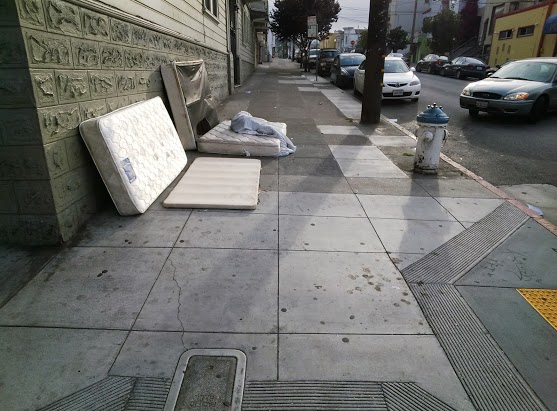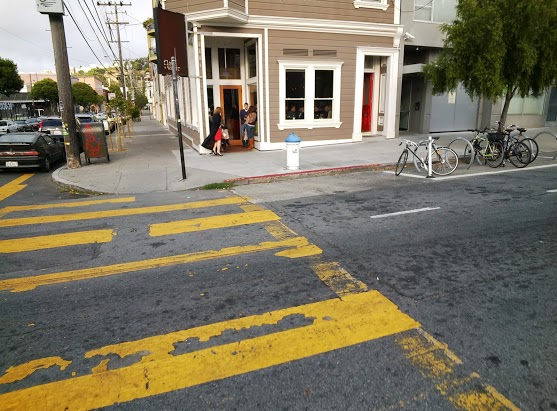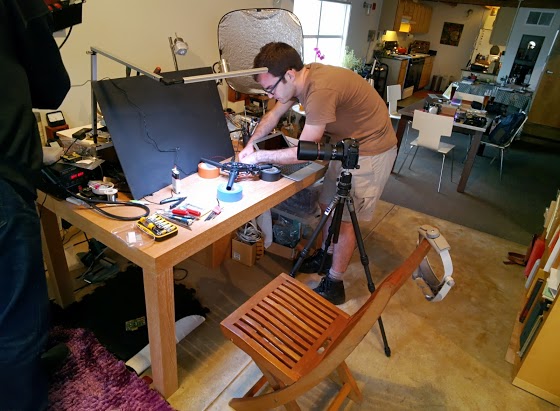Google Glass - Internal Hardware
 We avidly brought Glass over to the lab to start the analyzation. Theory ruled: consider the possibility that the whole assortment of Glass is potted with epoxy obliging solid solvents to get to. Which part is the battery in? How hackable is this thing? Where are the sensors? Any additional equipment characteristics yet to be opened by future programming upgrades? Anyhow in the first place, where to even start opening it?
We avidly brought Glass over to the lab to start the analyzation. Theory ruled: consider the possibility that the whole assortment of Glass is potted with epoxy obliging solid solvents to get to. Which part is the battery in? How hackable is this thing? Where are the sensors? Any additional equipment characteristics yet to be opened by future programming upgrades? Anyhow in the first place, where to even start opening it? With no thought of what lay ahead, we began by evacuating the titanium outline from the case that holds all the great stuff.
Google Glass Specs
Fit
- Adjustable nosepads and durable frame fits any face.
- Extra nosepads in two sizes.
Display
High resolution display is the equivalent of a 25 inch high definition screen from eight feet away.Camera
- Photos - 5 MP
- Videos - 720p
Audio
- Bone Conduction Transducer
Connectivity
- Wifi - 802.11b/g
- Bluetooth
Storage
- 12 GB of usable memory, synced with Google cloud storage. 16 GB Flash total.
Battery
One day of typical use. Some features, like video calls and video recording, are more battery intensive.Charger
- Included Micro USB cable and charger.
Mobile compatibility
The MyGlass companion app lets you set up contacts, Glassware, and other features. It's available for Android and iOS.- MyGlass for Android requires Android 4.0.3 (Ice Cream Sandwich) or higher.
- MyGlass for iOS requires iOS 7 or later (iPhone 4 and above, iPad 2 and above with cellular connection).
The Google Glass Experience
Glass arrives in an attractive, easy-to-open box. A few included accessories are included:- Tinted shield
- Clear shield
- Charger / AC adapter
- USB cable
- Drawstring soft case












Unveiling it's Hardware
Removing the PodThe introductory passage point into the Glass fenced in area is a solitary Torx T5 screw. This screw evacuates the "case" from the primary titanium casing, and is likely planned to be client serviceable. We disengaged the casing and put it aside. Uprooting this screw additionally empowered us to peruse the Glass unit's serial number, tucked against a dark surface behind the edge.





Formally, Glass isn't presently good with medicine glasses, in spite of the fact that plans are in the work to help them. Nonetheless, as an arbitrary trial, we attempted basically appending the Glass "case" to a couple of solution casings.



In spite of the fact that practical, the experience was below average, in light of the fact that the head nearness sensor was extremely temperamental when beside a lens.
Opening The Case
First we pried off the plastic casings around the display, located just next to the main prism.


This exposed the proximity sensor and what appears to be an ambient light sensor.



Right now we saw no clear means for evacuating more plastic. We painstakingly nudged with spudgers and screwdrivers, yet in any case discovered an interior screw that was troublesome to uproot non-ruinously. We connected constrain and influence, cut a bit around the inside screw, and peeled back the external shell. We then uprooted the now-uncovered inward screw.



Opening The Case
Removing the casing exposed a few parts, including the separate touchpad module on the right side of the unit. When a Glass users looks like they are pensively tapping their temple, they are interacting with this sensor. The touchpad is a full custom module made by Synaptics, and is driven by a Synaptics T1320A touchpad controller.



Fundamental Board
The fundamental rationale board was currently uncovered. The inwards-confronting side holds a RF module, some little connectors and help Ics, and copper noting that this is "a GOOGLE [x] processing".This board was adhered to a warm cushion with heaps of glue. In the wake of uprooting it and cleaning off the pink warm compound, we uncovered the center chips fueling Glass: a TI Omap4430, 16gb of Sandisk blaze, an Elpida portable DRAM chip. This board likewise holds RF gadgets, including a Sirfstariv Gsd4e GPS motor and a Bluetooth/wifi module stamped as WM-BN-BM-04-an and an information framework which deciphers to "85015340010112111400118159". A flex PCB and a RF link, tied down with some metal tabs and a U.fl connector, trailed from this board to the behind-the-ear unit.
Some content in the copper on this board peruses >9k! It's in excess of 9000!



Behind Ear Module
To keep the unit's weight dispersed all the more equitably, Glass keeps its battery in an adjusted bit behind the wearer's ear. We stripped this zone open, again applying damaging energy to tear the plastic.The single-cell Lithium Polymer battery sits at the end of the flexprint PCB and is checked as having a limit of 2.1 Wh (approximately 570 mah). It is not client replaceable, not even a tiny bit.





Speaker
Just forward of the battery pod is a bone conduction speaker, which seems to double as a tactile switch.Display Assembly
An alternate flex PCB, this one a great deal more many-sided, interfaces the primary rationale board to a get together holding the showcase, Polaroid, and some different sensors. It wraps around and through the edge holding those segments. We tenderly pulled it off its connectors and removed it.


The flexprint PCB holds Glass' inertial sensor, an Invensense MPU-9150. Additionally included is the thing that appears to be a Wolfson Wm7231 MEMS receiver. There is an extra indistinguishable chip on the principle rationale board, proposing that Glass may utilize a double receiver clamor abrogation framework.


Display
The Glass presentation is little. It is held fast to within the inward edge with light paste around the edge of the showcase board. We scratched off the paste with a dental pick and uprooted the board.For scale, it is demonstrated imagined on top of a US dime. With a local determination of 640x360, the pixels are harshly 1/8th the physical width of those on the iphone 5's retina show.




Optics
Glass utilizes a collapsed light pathway comprising of just a little handful of optical components. On the whole they make the presentation's picture seem to buoy a couple of feet from your face, in the upper right corner of your vision. Steve Mann develops these optical procedures in a great deal more detail and depicts some extra tests.



In the last photograph, you can see this optical pathway at work when the presentation is evacuated.
Camera
The Glass Camera appears to be of ordinary cell phone level size and organization. It is not coaxially adjusted to the wearer's eye. The Polaroid and showcase seem to converse with the CPU autonomously, with no immediate association between one another.

We took some example photographs through Glass.




How Google Glass Works



























0 comments:
Post a Comment